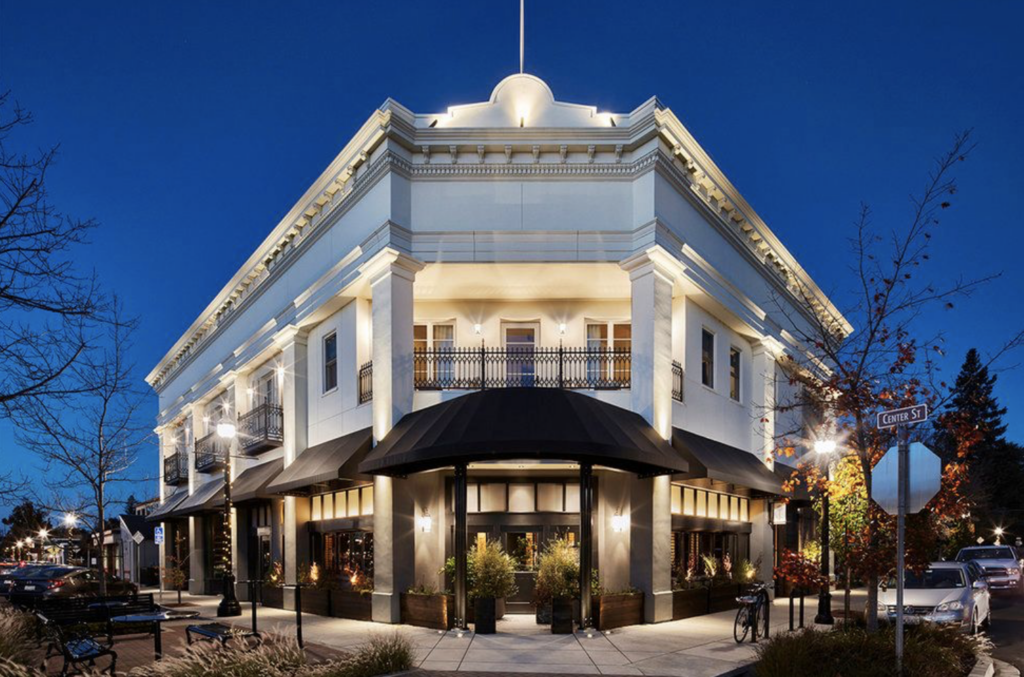Since opening SingleThread in December 2016, Connaughton had been pondering the idea of an in-room dining experience. Guests who stay at the inn a single night always eat at the restaurant, which in late 2018 was awarded three Michelin stars. For guests who stayed longer, Connaughton wanted to offer an alternative to the restaurant’s 11-course tasting menu, which doesn’t change from one evening to the next. “I like the idea that the room has its own unique experience, like a secret menu,” he continued, “and that there’s no other way to have that experience than to come and stay.”
The idea of using donabe appealed to Connaughton on a number of levels. From a service perspective, donabe had certain advantages, namely their easy portability and their ability to keep food hot. There were other considerations as well, among them the desire to share something from his background in traditional Japanese cooking, in contrast to the food served at the restaurant, which has more of a contemporary, California feel. There was also the social aspect of donabe, which resonates deeply with Connaughton’s philosophy of hospitality.
“One thing I think that is often lost on chefs, especially on western chefs,” he said, “is that the focus is so much on the food and the dish, and that there’s less consideration of the fact that the guests are there to experience themselves.” In the case of donabe, he continued, “it’s interactive. You’re sharing it together, it brings you closer together, you’re serving one another. It’s a moment that’s extended. There’s something comforting about it, and in the environment of the room, it’s as if you’re in your home.”
The minibar merited a look as well, especially since all of its temptations are included in the stay. Among its most intriguing contents were a SingleThread Domesticated Wild Ale whose Brettanomyces-inflected deliciousness was conceived in collaboration with The Russian River Brewing Company, and SingleThread’s own 2017 Chardonnay, made with fruit grown in San Lorenzo in the Russian River Valley and vinified in a concrete vessel at the inn’s on-site winery. An utterly different species from the stereotypical, heavily oaked California chardonnay, it was as irresistibly drinkable as it is exclusive—available only in SingleThread’s guest rooms, and by the glass or the bottle on the restaurant’s wine list.
As dusk turned to dark, dinner got underway at the suite’s dining table, with a first course called Early Spring in Sonoma, which consisted of six morsels, each served on a unique ceramic dish. Connaughton later explained that this kind of thing is typical in the prelude to a donabe. “It’s such a hearty thing,” he said, “that it’s generally preceded by some lighter bites. When we’re dining with a family who does donabe, they’ll do a course of raw and picked things, and then get into the donabe.”
And so we got into the groove. There was a wedge of simmered young bamboo shoot, its texture somewhat like that of a boiled parsnip, only somewhat more fibrous, with a mildly sweet flavor reminiscent of baby corn. And a small cut of sawara (Spanish mackerel), the flavor of whose pearlescent pink flesh might be mistaken for steak tartare except for the hint of ocean. Nestled in the concavity of another tiny vessel, a pink bay scallop, its creamy sweetness counterposed by the wild tang of a bit of pickled ramp. A small cut of lotus root, braised in something very savory and garnished with sesame seeds, brought a nutty, umami sweetness to the game. Finishing it off, a small slice of densely chewy and delicately flavored mejina (rudderfish) curled around some braised konbu and a sliver of the green stem of negi, a type of Japanese onion; and aji (Japanese horse mackerel) garnished with a dot of pickled Indian lime and a pale pinkish-purple chive blossom.
The second act was a composition called North Coast Tide Pool. Served in a bowl made of exotic-looking, vividly grained wood, it was a minor parade of delicacies: luxuriously fatty slivers of akabana kanpachi (akabana being one of the more mature forms of kanpachi, also known as amberjack), crispy wild seaweeds, and the salty snap of sea beans.
There was a logic to all this fishiness, since from among the donabe options—which included American Waygu shabu shabu, pork meatball tan tan, and Kyoto vegetable and housemade tofu—we’d chosen the Hokkaido seafood hotpot. To prepare it, the cooks sweat some ginger and Japanese scallions with sake, mirin ,and a little sesame oil; then add dashi (the versatile Japanese soup stock), then vegetables and tofu; and finally the seafood, which cooks in the brief amount of time it takes the covered donabe to travel from the kitchen to the guest room.
Set down on the table atop a portable gas burner, the donabe, a lustrous black number from the Nagatani-en pottery, was ready to go. The burner—which was only serving as a pedestal at this point, as the pot was piping hot—would come into play later on to fire up the donabe for the shime, a finishing course in which rice would be added to the dashi and cooked into a porridge-like concoction. From above, the Hokkaido hotpot looked like an entirely vegan affair—nothing but the most succulent-looking maitake mushrooms, savoy cabbage, Japanese onions, and watercress as far as the eye could see. The real action was down below, where scallops, mussels and clams hobnobbed with Santa Barbara abalone and prawns, and great big hunks of black cod and king salmon, each bite of which we embellished with one or another condiment, whether kanzuri, chirimen-jako (boiled and dried baby sardines), or spicy-citrusy-salty yuzu kosho.


